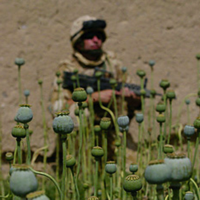On Sept. 26, deep inside Taliban-controlled territory in Afghanistan’s Helmand province, Afghan counternarcotics agents backed by their Australian counterparts seized and destroyed $350 million worth of illegal narcotics. The operation set a record for drug seizures in Afghanistan, according to the U.S. Drug Enforcement Administration. Two weeks earlier, the same authorities busted the largest heroin-producing facility found in Afghanistan since 2006, capturing drugs worth $150 million if sold in the U.S. Both operations took millions of dollars from the pockets of insurgents who might otherwise use the money to buy weapons and ultimately mount narco-terrorist attacks inside Afghanistan.
But a grave bureaucratic error by the U.S. government has shut down major anti-drug training programs in Afghanistan, threatening these vital missions and dealing a major blow to Afghan capacity-building. In September, the Pentagon withdrew funding and personnel from the Counternarcotics Training Program in Afghanistan, the Afghan National Customs Academy and the Afghan Advanced Border Management Academy, after it discovered that it had not properly received Congressional authorization to finance the programs. As a result of the oversight, which only recently came to light, all of the programs were disbanded in late-September, around the time of the successful raids in Helmand. Senior U.S. drug enforcement officials described the shutdown as a major setback, effectively undoing three years of progress made in training and gaining the trust of their Afghan counterparts.
The current funding deficit could not come at a worse time. The Counternarcotics Training Academy in Kabul opened in 2007 and underwent an $800,000 upgrade in 2010, more than doubling its capacity from 200 to 440 students. But the United Nations Office for Drugs and Crime (UNODC) reported in September that Afghan opium production is up 61 percent compared to last year. And according to the latest U.S. Government Accountability Office (GAO) report (.pdf) regarding the ability of Afghan law enforcement agencies to dismantle and disrupt drug trafficking organizations, each of the counternarcotics police organs, including the elite National Interdiction Unit, received unsatisfactory “capability milestones.” Each was deemed only partially capable of conducting operations independent of international forces, while the specialized Air Interdiction Unit was ranked not capable of doing so. An additional internal interagency report cited organizational capacity as the single greatest weakness of the Afghan counternarcotics police.

